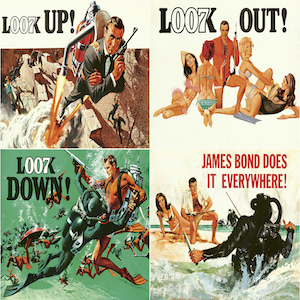An Industrial Read
By Jo Phillips
The Great Depression (1929–1939) was an economic shock, a period of deep depression that happened after a major fall in stock prices in the United States. Starting in September it led to the Wall Street stock market crash of October 24 (Black Thursday). It was the longest, deepest, and most widespread depression of the 20th century. Much of the problem lead from the industrialisation of economies. The period of social and economic change that transformed society from an agrarian society (farming) into an industrial society that devastated both rich and poor Much documented in films and books following is a list of fiction books that give the personal stories of the period
The Four Winds Kristin Hannah
From the New York Times, bestselling author of The Nightingale and The Great Alone comes a powerful American set during the Great Depression. Millions out of work, drought on the great plains crops are failing, and the Dust Bowl (The Dust Bowl was a period of severe dust storms that greatly damaged the ecology and agriculture of the American and Canadian prairies during the 1930s.) has arrived with vengeance.
Elsa Martinelli the lead character of the book, faces difficult choices does she fight to keep her land or does she go to California in search of a better life? This is a book about the American Dream, as seen through the eyes of one indomitable woman whose courage and sacrifice will come to define a generation.
The Grapes of Wrath by John Steinbeck
The most known and Pulitzer Prize-winning epic of the Great Depression was first published in 1939. This Pulitzer Prize-winning epic of the Great Depression chronicles the Dust Bowl migration of the 1930s and tells the story of one Oklahoma tenant farming family, the Joads, like the above story who are driven from their homestead and forced to travel west to the promised land of California.
In 1940 the celebrated director John Ford made a film of the book starring the actor Henry Fonda.
The Book Woman of Troublesome Creek by Kim Michelle Richardson
Cussy Carter, the last living female of the rare Blue People (the last of a line of blue-skinned people, whose skin appears the unusual shade due to a rare genetic disorder) ancestry resides in Troublesome Creek Kentucky.
Cussy Mary is a “Book Woman” one of the Packhorse Librarians who delivered books to remote areas of the Appalachian Mountains during the Great Depression. The packhorse librarians ride across creek beds and up treacherous mountains on mules to deliver books and other reading material to the impoverished hill people of Eastern Kentucky
Her father who is dying is desperate to get her married off, but Cussy Mary loves her independence, her reading, and the joy she helps bring people with books, and would not be able to continue as a married woman.
The story is a fictionalised account of real subjects in the history of eastern Kentucky, during the great depression.

Of Mice and Men John Steinbeck
Another book of the same era by the writer John Steinbeck published before his novel The Grapes of Wrath in 1937. He based the story on his own experiences working alongside migrant farm workers as a teenager in the 1910s.
It recounts the story of two men George Milton and Lennie Small, two displaced migrant ranch workers, who move from place to place in California in search of new job opportunities during the Great Depression.
George Milton, an intelligent but uneducated man, and Lennie Small, a bulky, strong man but mentally disabled are in Soledad on their way to another part of California to find work. They hope to one day attain the dream of settling down on their own piece of land. George is very much the protector of Lennie who because of his size and his limited understanding often gets into trouble.

Bud, Not Buddy, by Christopher Paul Curtis
In 1936, in Flint, Michigan motherless boy ten-year-old Bud is on the run with his own suitcase full of special things. He also has his list. Bud Caldwell’s Rules and Things for Having a Funner Life and Making a Better Liar Out of Yourself.
Not knowing who is father really is he has a few clues including
flyers advertising Herman E. Calloway and his famous band, the Dusky Devastators of the Depression.
A heart-warming, funny and fast-moving story and past winner of the highly prestigious Newbery Medal.
The Day of the Locust by Nathanael West
A celebrated novel about the Great Depression, set in Hollywood, California, with themes dealing with the alienation and desperation of a broad group of odd individuals who exist at the fringes of the Hollywood movie industry.
A young artist named Tod Hackett, has been hired by a Hollywood studio to do scene design and painting. Whilst working he plans an important painting to be called “The Burning of Los Angeles,” a portrayal of the chaotic and fiery holocaust which will destroy the city. While the cast of characters Tod befriends are a conglomerate of Hollywood stereotypes, his greater discovery is a part of society whose “eyes filled with hatred,” and “had come to California to die.”
Caught up in a fantasy world where the cult of celebrity rules he becomes besotted by the beautiful Faye, an aspiring actress, and occasional call-girl, his dream rapidly becomes a nightmare.
This undercurrent of society captures the despair of Americans who worked and saved their entire lives only to realize, too late, that the American dream was more elusive than they imagine.
A 1975 film was made from the book by director John Schlesinger and starring Donald Sutherland, Karen Black, William Atherton, Burgess Meredith, Richard Dysart, John Hillerman and Geraldine Page.
And finally a true story to round up
The Man Who Walked Backward By Ben Montgomery. The books tell the fascinating story of courage, change, and corruption from 1929 to 1939 and one man’s life during the Great Depression.
As many struggled to stay afloat, some Americans tried money-making schemes. Meet Plennie Wingo of Abilene, Texas was one such individual. This true story is somewhat unusual, in April of 1931, Plennie donned a pair of steel-heeled shoes, made postcards of himself, and began a backward trek around the world.
Looking for sponsorship he found so much more, run-ins with the police to the deep kindness of strangers he travelled across Steinbeck’s America and then onto Hitler’s Germany, and beyond. A unique portrait of the great depression.
In today’s world, it is hard to imagine a life without industrialisation, but it took a huge shift and lots of pain for us to live in a world full of industrialised products that help make our lives easier.
If you enjoyed reading An Industrial Read why not read Unique is Rare Here








